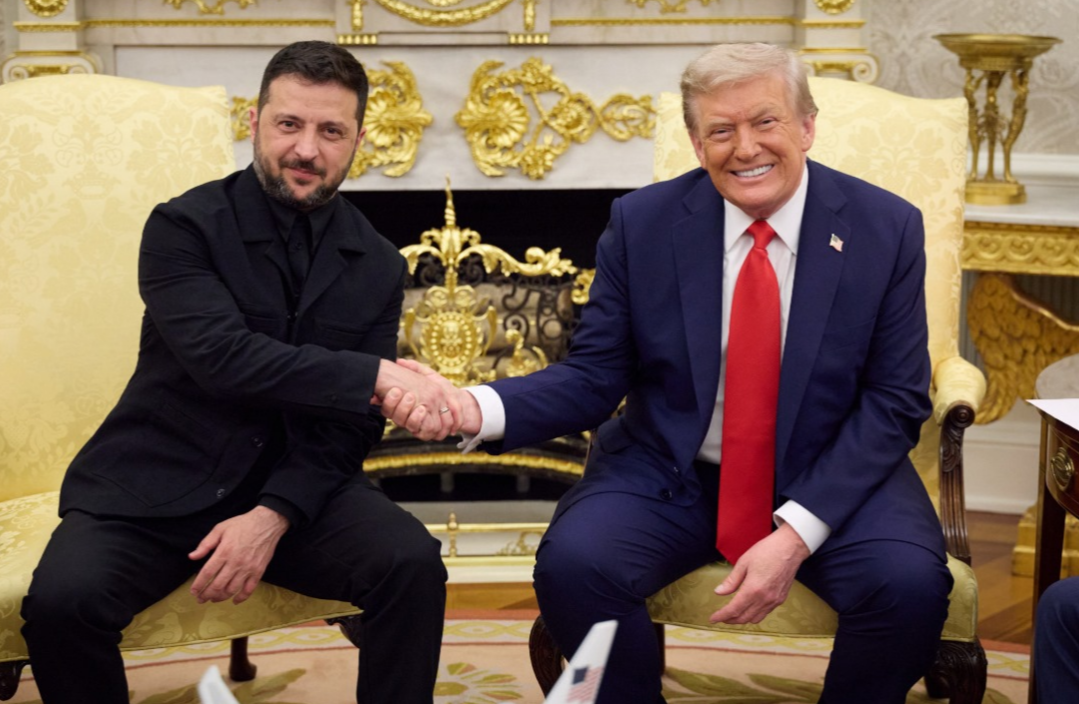Ukraine has proposed a $150 billion plan involving a $100 billion U.S. weapons purchase funded by Europe and a $50 billion drone production pact, in exchange for binding U.S. security guarantees after a possible peace deal with Russia. The proposal, discussed at the White House with President Trump, European leaders, and President Zelenskyy, highlights Europe’s financing role, U.S. defense industry gains, and Ukraine’s firm rejection of territorial concessions.
Ukraine Proposes $100 Billion American Weapons Deal
Ukraine has outlined a sweeping proposal worth $150 billion aimed at securing long-term U.S. security guarantees and boosting its defense capabilities in the aftermath of a potential peace settlement with Russia. The plan, revealed in a document shared with European allies, was presented at the White House on August 18, 2025, during a meeting between Ukrainian President Volodymyr Zelenskyy, U.S. President Donald Trump, and European leaders.

At the heart of the proposal are two major components: a $100 billion weapons purchase from the U.S., financed by Europe, and a $50 billion drone production pact involving cooperation between Ukrainian and American companies. The initiative is designed to reinforce Ukraine’s military readiness while aligning with Trump’s economic priorities of strengthening U.S. industries.
$100 Billion Weapons Purchase
Ukraine has pledged to purchase $100 billion worth of U.S.-made weapons, with the funding expected to come from European allies. While the proposal does not list every weapon, Kyiv has highlighted its interest in at least 10 U.S.-made Patriot air defense systems to protect cities and critical infrastructure. Additional missiles and advanced military equipment are also being sought.
Trump has welcomed the proposal, framing it as a win for American industry. He reportedly stated, “We’re not giving anything. We’re selling weapons.” The deal aligns with his broader “America First” approach, emphasizing economic benefits for the U.S. rather than direct aid.
$50 Billion Drone Production Pact
In addition to the weapons deal, a separate $50 billion agreement envisions collaboration between Ukrainian and U.S. firms to manufacture drones. The exact terms—whether this involves procurement, joint ventures, or investment—remain unclear, but the pact underscores Ukraine’s push to expand domestic defense production with U.S. support.
Security Guarantees and Peace Framework
In exchange for these deals, Ukraine is seeking binding U.S. security guarantees to shield it from future Russian aggression. European Commission President Ursula von der Leyen emphasized ongoing efforts to build “strong security guarantees” in coordination with the U.S. Zelenskyy expressed optimism after the White House talks, suggesting that the details of these guarantees could be finalized within seven to ten days.
Ukraine has set firm conditions for peace, rejecting any settlement that involves territorial concessions. This stance directly counters a Russian proposal reportedly discussed between Trump and President Vladimir Putin in Alaska, which suggested freezing the front line if Ukraine withdrew from Donetsk and Luhansk. Kyiv insists that peace must begin with a full ceasefire, coupled with compensation for war damages. Ukraine is pushing for the use of $300 billion in frozen Russian sovereign assets held in Western countries to fund reparations.
Sanctions relief for Russia, Ukraine says, will only be considered if Moscow complies with the terms of a future peace agreement.
European Financing and U.S. Strategy
The financing role of Europe is central to this plan. The mechanism for funding the $100 billion weapons purchase remains uncertain, with options including direct contributions, loans, or the use of frozen Russian assets. The precedent for such financing was set in 2024 when the G7 approved a $50 billion loan package to Ukraine, backed by profits from frozen Russian assets, with the U.S. providing $20 billion.
Trump has consistently pushed for Europe to bear the financial burden of Ukraine’s defense, arguing that U.S. taxpayers should not foot the bill. U.S. Vice President JD Vance echoed this stance, saying Europe would be responsible for future military assistance.
Strategic Implications
For Ukraine, the proposal aims to secure enduring U.S. backing despite Trump’s past skepticism of American aid to Kyiv. By framing the deal as a purchase that benefits U.S. jobs and defense companies, Ukraine hopes to appeal directly to Trump’s economic agenda.
For the U.S., the deal would provide a significant boost to the defense industry, creating jobs and reinforcing Trump’s message of transactional diplomacy.
For Europe, the plan poses financial challenges. Covering the costs of Ukraine’s military buildup may stretch budgets, with some observers suggesting that the EU might need to “fire up the printers” to generate funds. However, it also reflects Europe’s resolve to stand by Ukraine at a time when U.S. financial involvement is being scaled back.
For Russia, the terms underscore Kyiv’s uncompromising position. Ukraine’s rejection of territorial concessions and its demand for reparations from frozen Russian assets signal a tough negotiating line, potentially complicating future peace efforts.
White House Meeting and Reactions
The proposal was unveiled during a multilateral meeting attended by Trump, Zelenskyy, German Chancellor Friedrich Merz, Ursula von der Leyen, and NATO Secretary General Mark Rutte. The meeting came days after Trump’s summit with Putin in Alaska, where the Russian leader pressed for territorial concessions from Ukraine.
Notably, Trump reportedly spoke with Putin by phone for 40 minutes during the White House meeting, a move that raised eyebrows among European leaders and left Zelenskyy visibly uncomfortable when Putin’s name was mentioned. Despite the tensions, Trump described the meeting as “very successful” and insisted that all parties shared the goal of ending the war, saying, “We are all working for the same goal. We want to stop the killing and resolve this.”
A follow-up virtual meeting between Trump, Zelenskyy, and European leaders has been scheduled to continue discussions.
Challenges and Uncertainty
Despite the ambitious scope of the proposal, uncertainties remain. Skepticism persists about the robustness of U.S. security guarantees, with critics comparing them to the Budapest Memorandum of 1994, which failed to deter Russian aggression decades later. Some voices on social media suggest the deal may be more about buying Trump’s goodwill than securing lasting peace.
Russian media, meanwhile, has mocked Trump’s leadership and expressed doubts about Western peace efforts, underscoring the challenges ahead.
While Zelenskyy has expressed confidence that guarantees could be finalized within days, the absence of concrete agreements and the deep divide over territorial issues highlight the fragile nature of ongoing negotiations. The outcome of the planned trilateral meeting between Trump, Putin, and Zelenskyy could determine whether this ambitious $150 billion plan becomes a cornerstone of Ukraine’s post-war security or remains an unfulfilled proposal.
Disclaimer: This article is based on reports, official statements, and developments available as of August 2025. The situation remains fluid, and details of the proposed agreements or negotiations may change as further discussions take place between Ukraine, the United States, and European allies.

